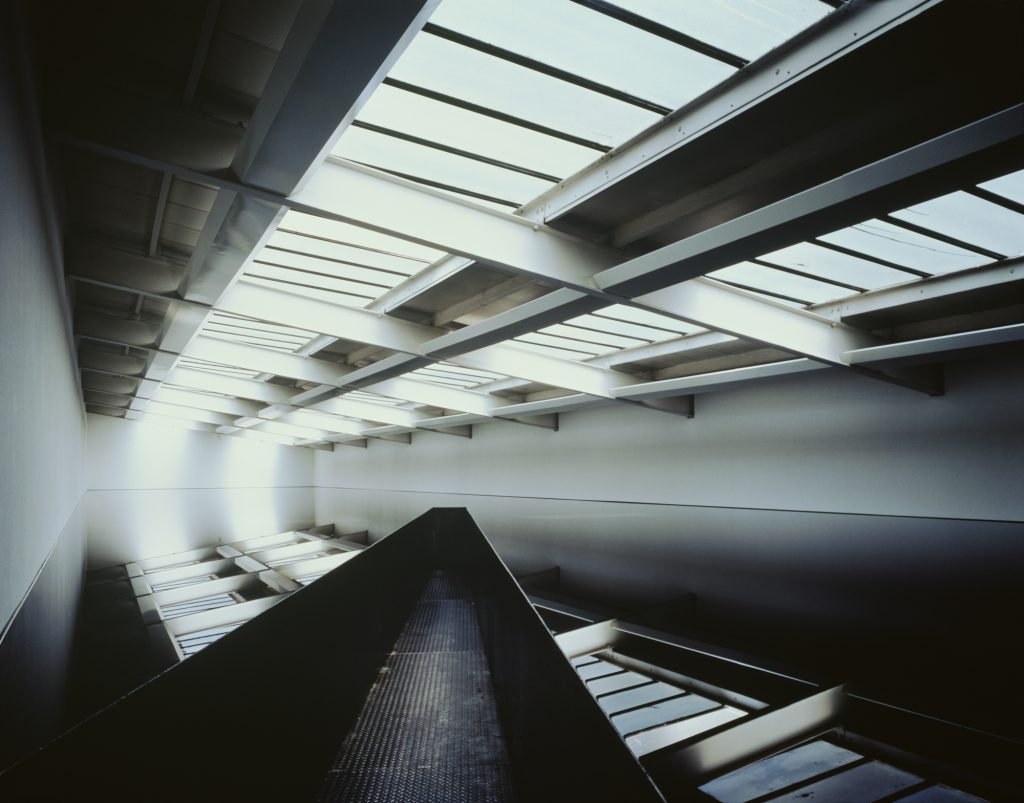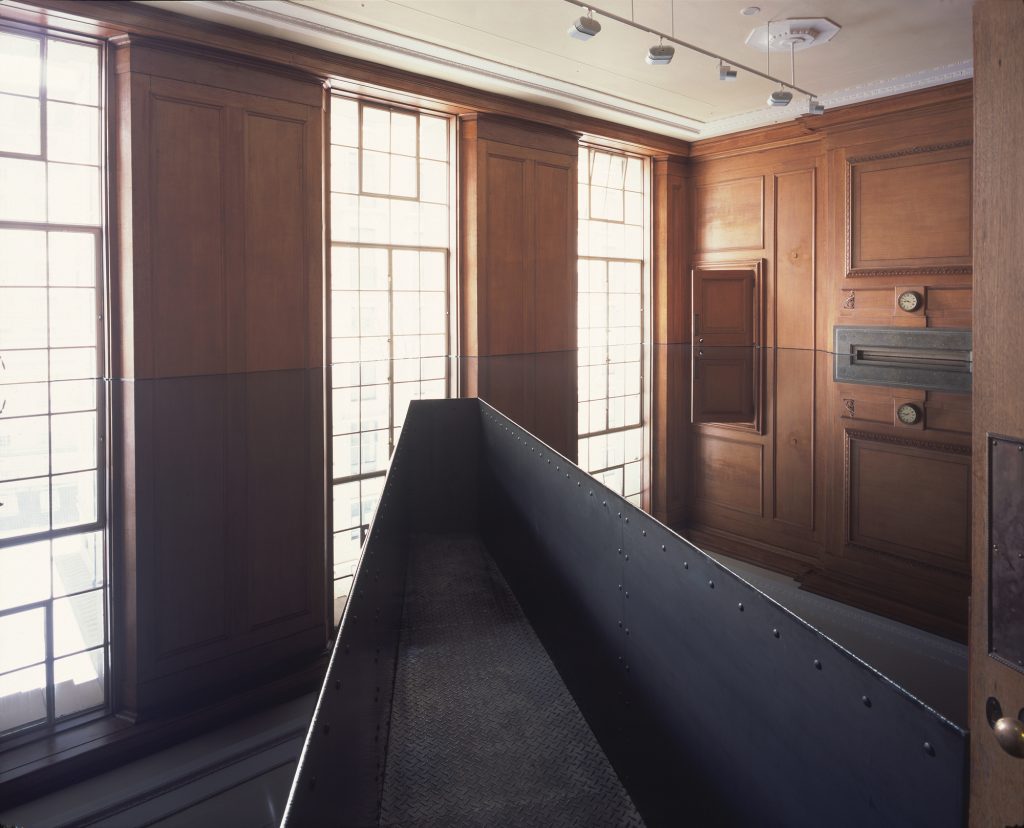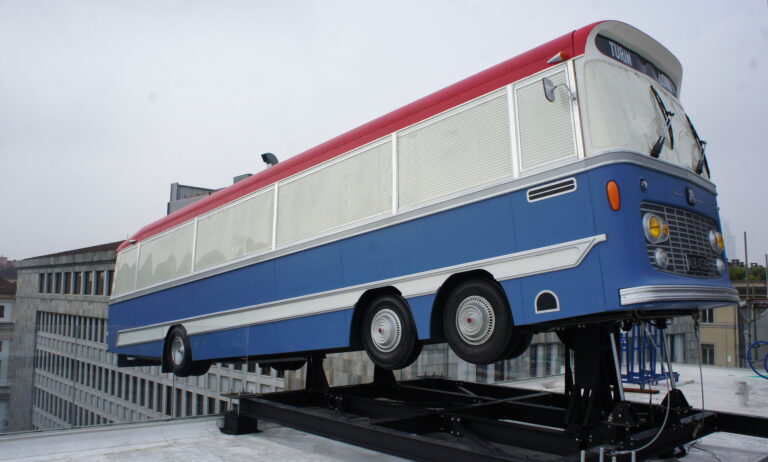

20:50, 1987 – Present Day
Richard Wilson is renowned for his transformative installations that blend engineering precision with artistic ingenuity. From the reflective stillness of 20:50 to the dynamic spectacle of Slipstream, his works challenge perceptions of architecture and space, inviting viewers to question their assumptions about permanence and fluidity. Partnering with cultural icon Hiroshi Fujiwara for Moncler’s City of Genius at Shanghai Fashion Week, Wilson explores the intersections of art, fashion, and urban design. Reflecting on themes of history, memory, and the evolving role of art, Wilson’s practice explores the social and physical dimensions of sites, often reanimating forgotten or derelict spaces.
h: In your installation 20:50, the viewer is enveloped by a reflective surface of recycled engine oil. What drew you to this medium, and how do you see it reflecting current environmental concerns?
Richard Wilson: 20:50 was first exhibited in 1987 at the infamous Matt’s Gallery in London. The work’s title, as well as its distinctive smell, offered an oblique clue about the simple material I used for the exhibition: motor oil. The title, 20:50, referred to the viscosity, or thickness, of standard engine oil.
The piece came about from the collision of various dislocated bits of information. Having created work for Matt’s Gallery before, I felt the weight of its space impinging on me more than I had anticipated. All I could think about was using the gallery itself as a mould or receptor, but beyond that, I was struggling with an idea.
During a holiday in the Algarve, I spent weeks sitting by a swimming pool – because I’m not very good at holidays. Immersed in the water up to my eyes, my mind wandered to the upcoming show at Matt’s. Slowly, the horizontal plane of the pool began to present itself as a useful concept. One day, it hit me: ‘I know, I’ll flood the place’. I wanted to define a plane in the gallery just as the water defined a plane in the pool – to make a liquid describe the horizontal within an architectural space.
The solution to what that liquid would be emerged almost coincidentally and reflected my evolving tendency to fuse ideas and materials from my immediate context.
The oil became part of the piece because I had a drum of the stuff sitting in my studio, leftover from annealing steel. I’d been meaning to dispose of it but hadn’t gotten around to it. The drum, lidless and forgotten, had accumulated bits of wood and junk around it over time.
Yet amidst the clutter, there was this void: a perfect reflection. That became the final piece of the jigsaw. The oil’s highly reflective surface allowed me to create a horizontal plane that divided the room yet engulfed it simultaneously, as it perfectly mirrored its surroundings.
Critics have repeatedly described 20:50 as site-specific. Although originally created for Matt’s Gallery, the work transcends its location. Its transferability to other distinctive sites around the world demonstrates its adaptability. The materials remain the same, but the focus shifts with each new site. In a way, it’s a site-specific work that can be specified to almost any site.
20:50 was never about the politics of oil. Like many of my ideas, it was about testing our preconceptions of the world. One way to achieve that is to take a toxic, polluting substance, place it in a tank in a gallery, and listen as viewers call it beautiful.

